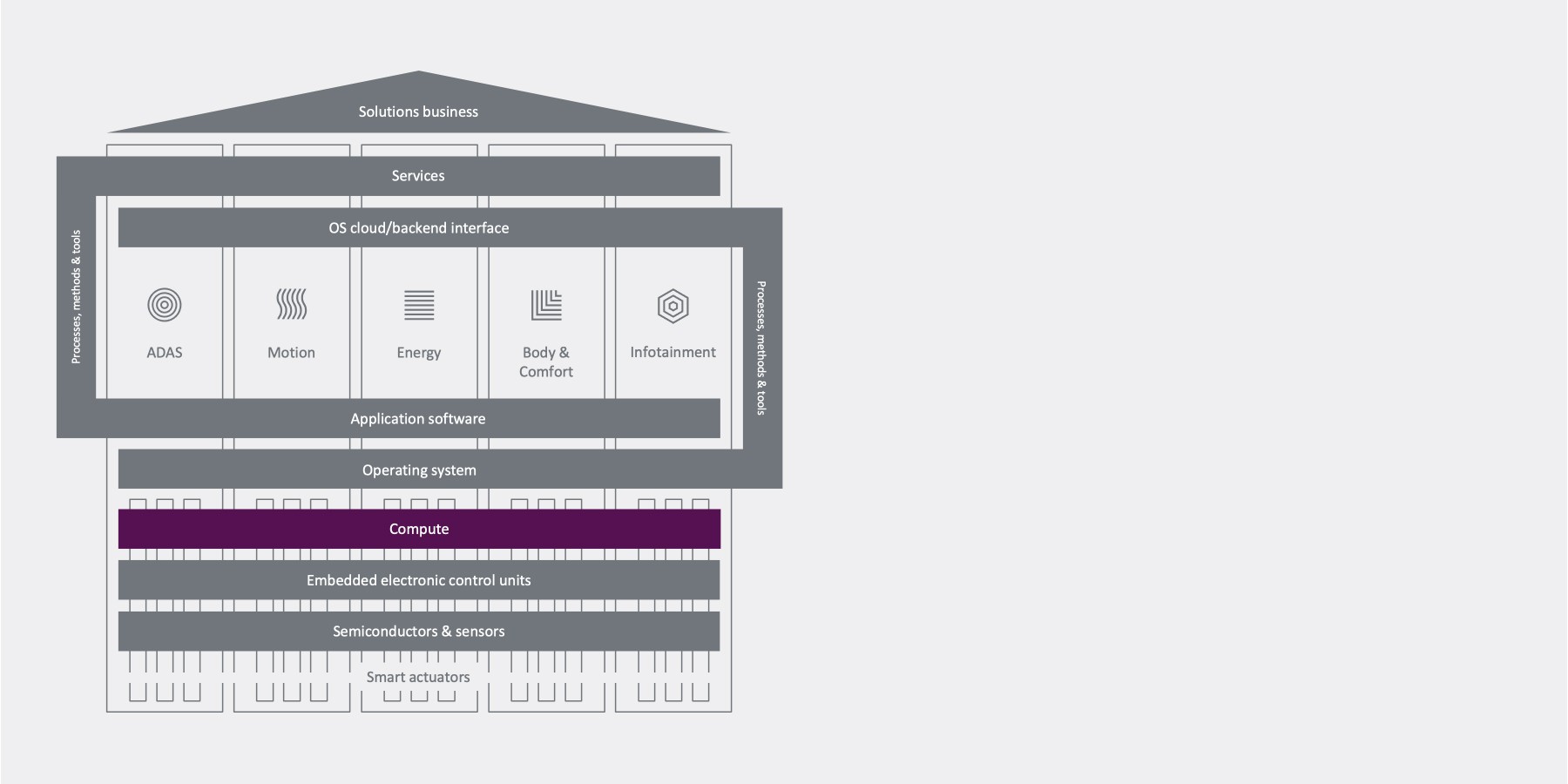Challenges – and how we master them
Over the past decades, the logical or technical vehicle architecture was of primary importance in the automotive industry. This vehicle architecture was usually broken down into physical components. Since the architecture and component breakdown remained relatively stable, this resulted in the emergence of specialized supplier markets, business models, and companies for the individual components.
With the transition towards software-driven mobility, customers are attaching ever greater importance to overarching, connected functions and features. Consistency in the technical realization of features and their rapid iteration are paramount in this case. As a result, the component-based breakdown becomes a structural disadvantage.
In light of these sweeping changes, we need to establish a common understanding of how we will generate revenue with software in the future (markets, market access, business models, customers, and users), and we must determine what role developments and trends such as generative artificial intelligence, automated driving, and the software-defined vehicle will play in all of this.
Consequently, software-driven mobility requires ever closer interaction between different domains, tech stack levels, and data – from embedded functions, to compute, and to the cloud.
Our holistic and collaborative approach to the key issues of this development are introduced in the following by ourselves.





















